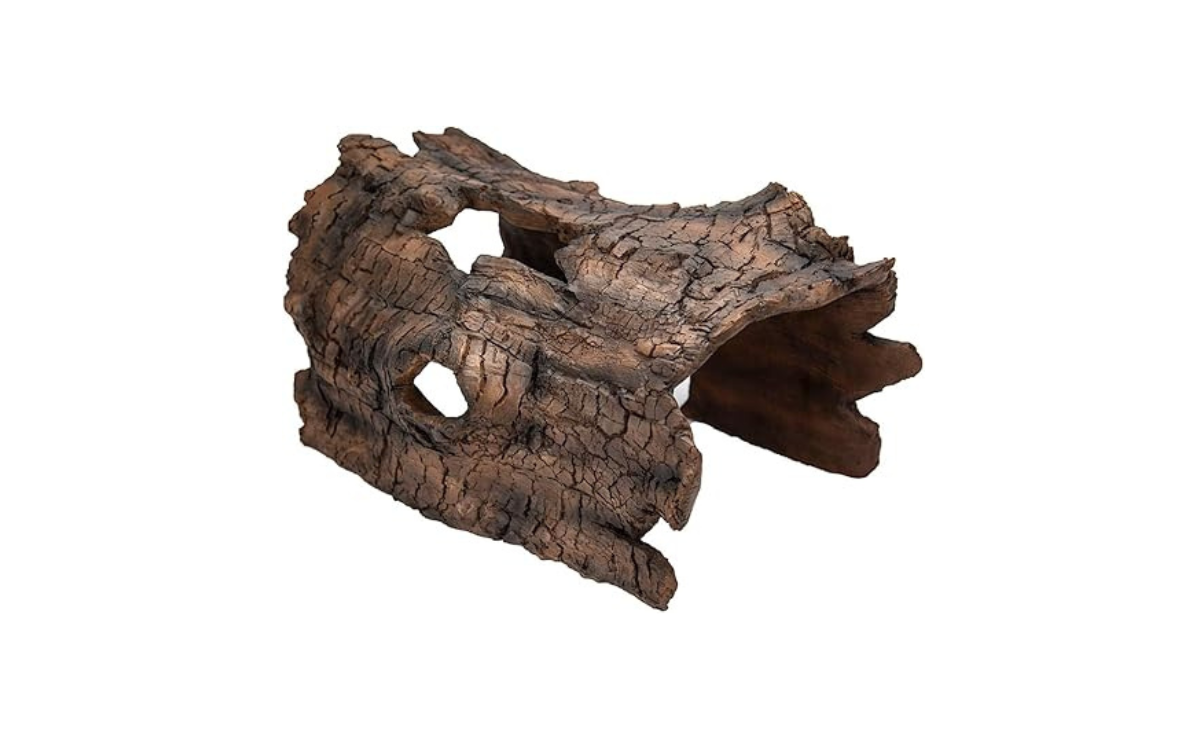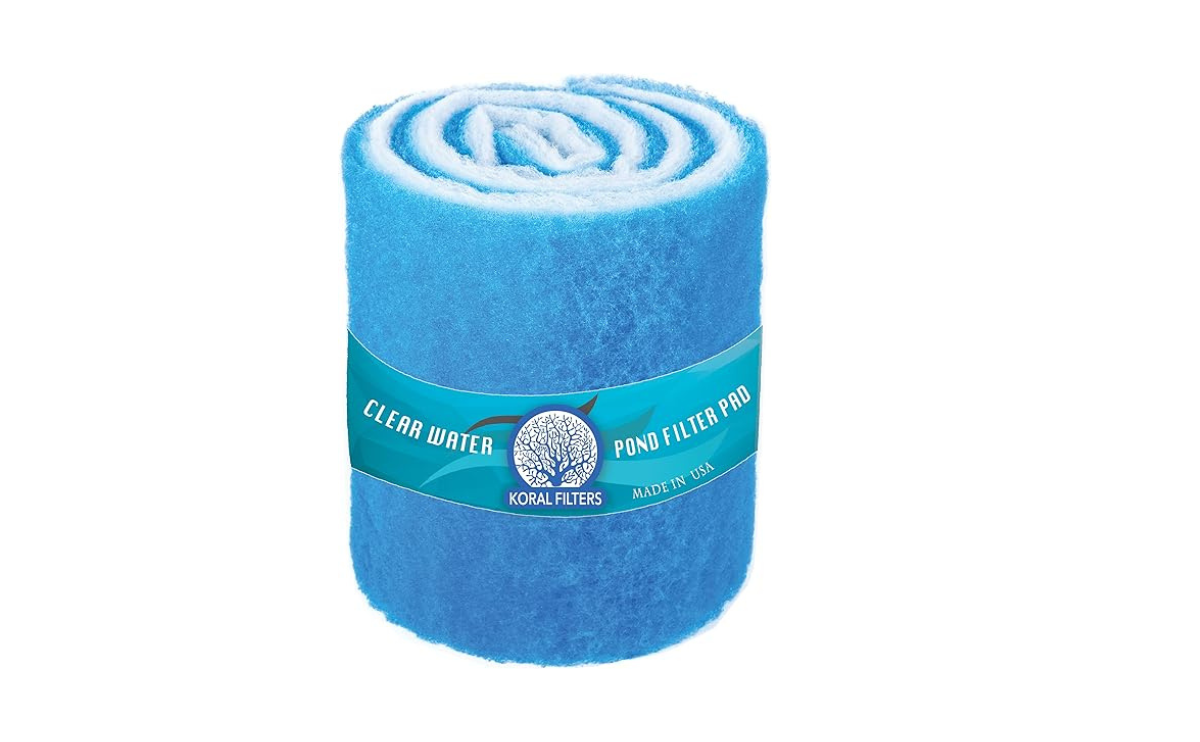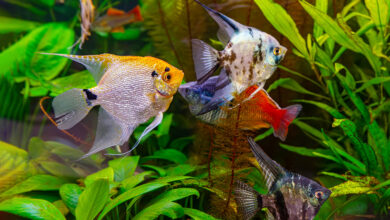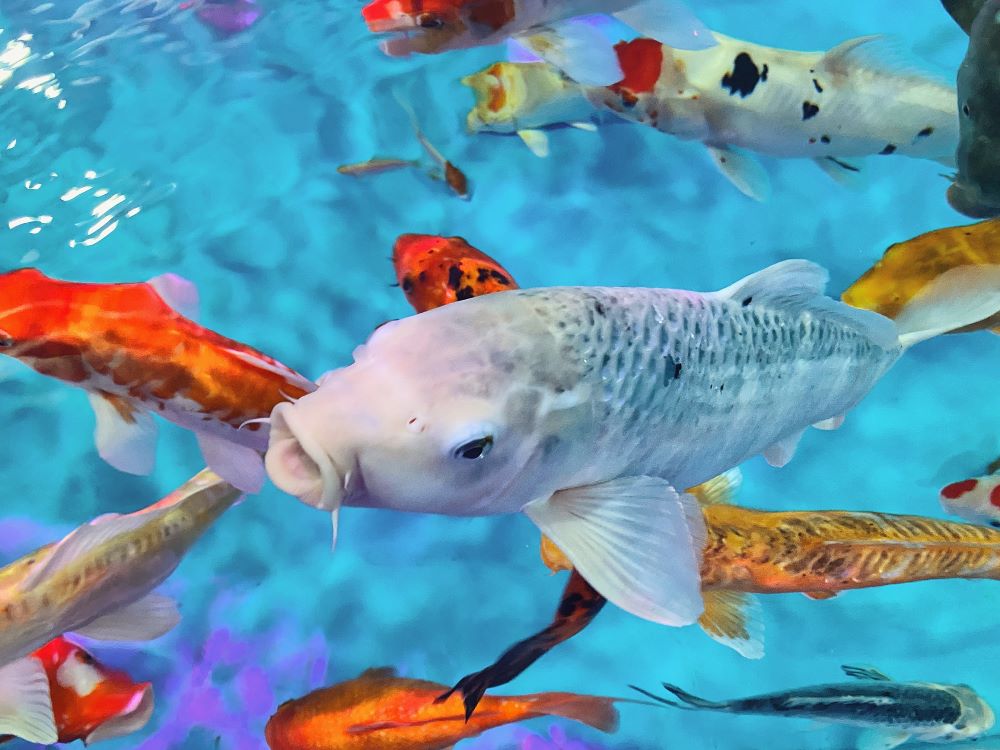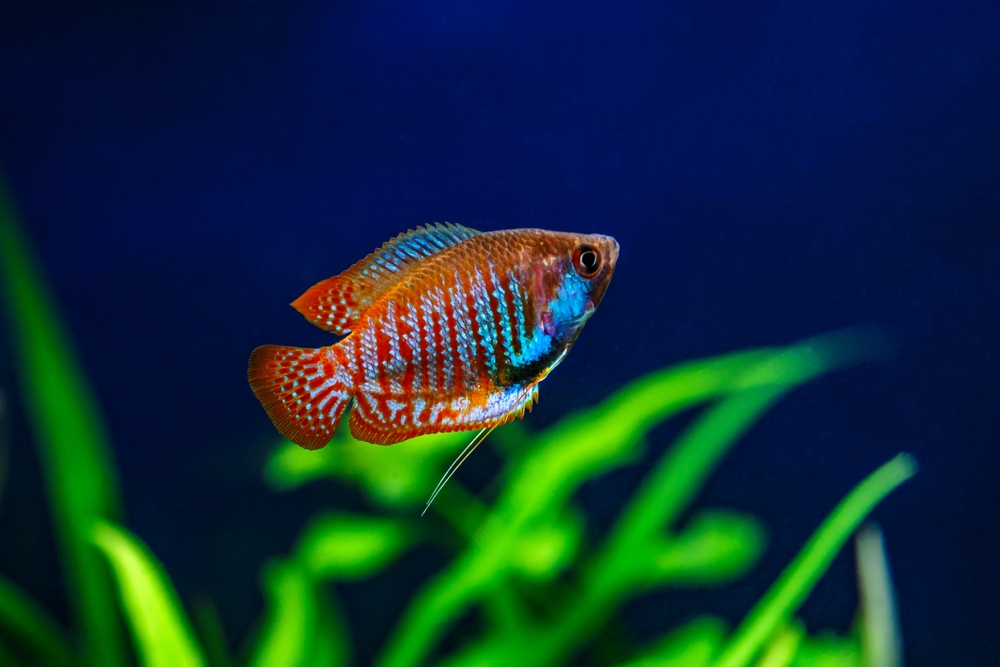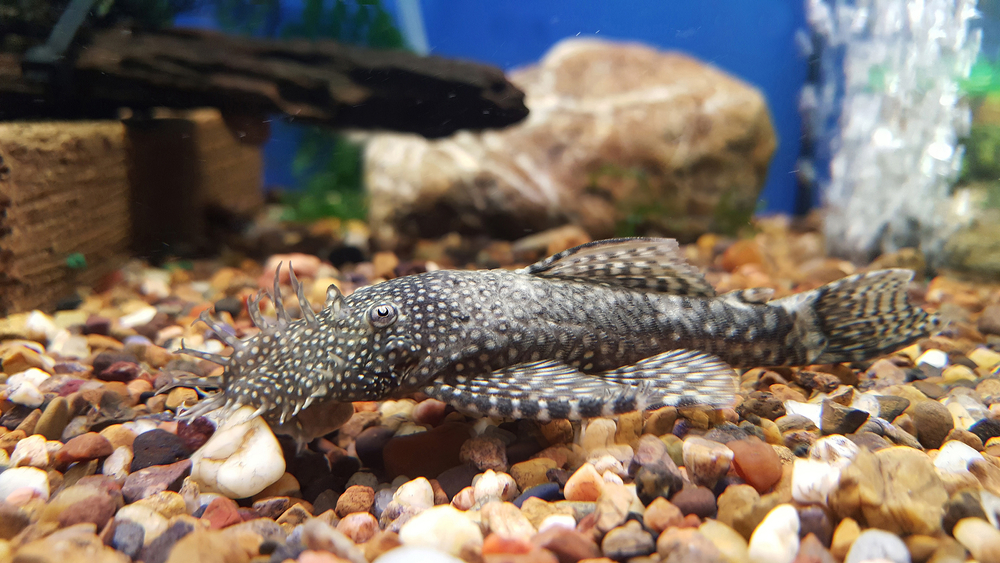When you purchase through links on our site, we may earn a commission. Here’s how it works.
Your pond is more than water… It’s a living ecosystem. And the fish you choose can make or break it.
Pick the wrong species, and you’ll be battling murky water, stressed fish, algae explosions, or worse, an empty pond after the first cold snap. But choose wisely, and you’ll have a thriving, self-sustaining aquatic paradise filled with vibrant color, motion, and balance.
Table of Contents
So which pond fish actually thrive, not just survive, in outdoor conditions?
In this guide, we’re not just listing the usual suspects. We’re breaking down the best fish based on your climate, pond size, and goals, whether it’s mosquito control, algae management, or simply creating the most beautiful backyard feature in the neighborhood.
Get ready to build a pond that works with nature, not against it. Let’s dive into the 10 best pond fish that deliver beauty, balance, and year-round resilience.
What Makes a Great Pond Fish?
Choosing the right fish isn’t just about aesthetics. A truly great pond fish contributes to a healthy ecosystem, thrives in your specific climate, gets along with other species, and won’t outgrow the space. Before stocking your pond, it’s important to evaluate each species against these four criteria.
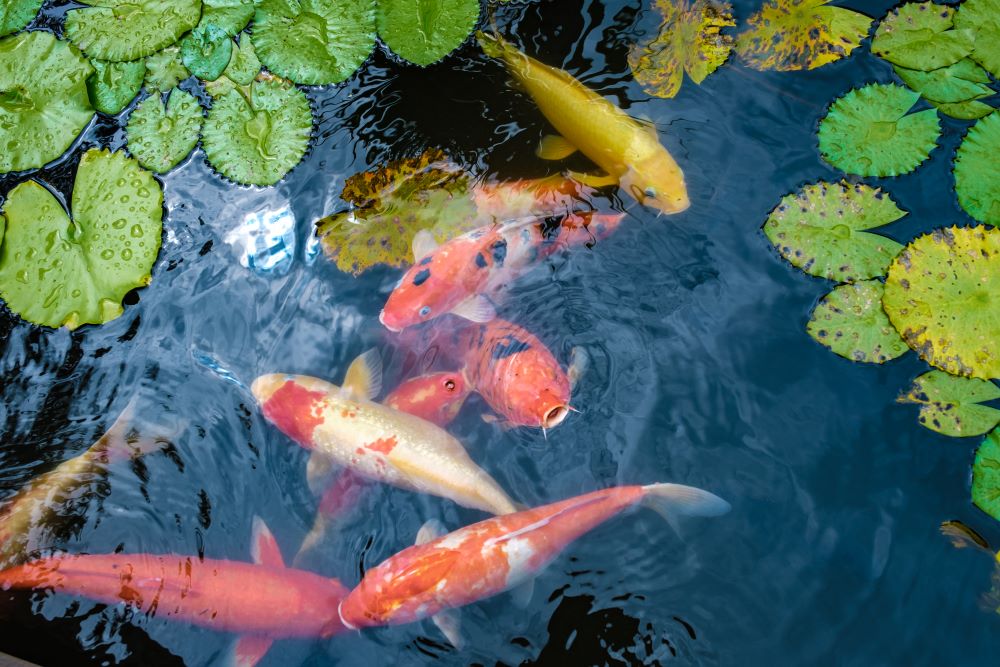
1. Climate Compatibility
Climate should be the first factor you consider. Some species, such as koi and goldfish, are cold-hardy and can tolerate seasonal temperature fluctuations. Others, such as guppies or Siamese algae eaters, prefer warm, stable water conditions and may need to be brought indoors during colder months.
Tip: If you live in a colder region, investing in proper pond pumps and filtration systems can help maintain water circulation and reduce the risk of freezing.
2. Growth and Size Considerations
Always consider the adult size of any fish before adding it to your pond. Overstocking or underestimating the growth potential of fish can lead to stress, poor water quality, and aggression among them.
- Koi can grow over 24 inches and require large, deep ponds.
- Goldfish typically reach 6 to 12 inches in length, depending on the variety.
- Pond sturgeons and weather loaches also need significant space to swim and thrive.
If you’re building or expanding your pond, make sure your pond liner is durable enough to support larger fish and long-term wear.
3. Feeding Behavior and Ecosystem Impact
Not all pond fish serve the same ecological role. Some control algae, others consume mosquito larvae, and some are purely ornamental. Balancing these feeding behaviors helps maintain a cleaner, healthier pond.
- Algae eaters, such as Siamese algae eaters, help reduce buildup on surfaces.
- Mosquito fish can reduce insect populations by feeding on their larvae.
- Bottom feeders stir up debris, which can either help or harm water clarity, depending on your pond setup.
A diverse feeding strategy prevents overgrowth of algae or pests, but avoid overloading one category, which can cause imbalance.
4. Compatibility with Other Fish
Even hardy fish can clash with the wrong companions. Some are peaceful, while others may become territorial or aggressive during the breeding season. Compatibility is key to a stress-free environment.
- Avoid mixing aggressive fish with delicate or slow-moving species.
- Choose fish with similar size ranges to prevent bullying or accidental predation.
- Do not mix tropical fish with cold-water species unless you’re managing separate seasonal care.
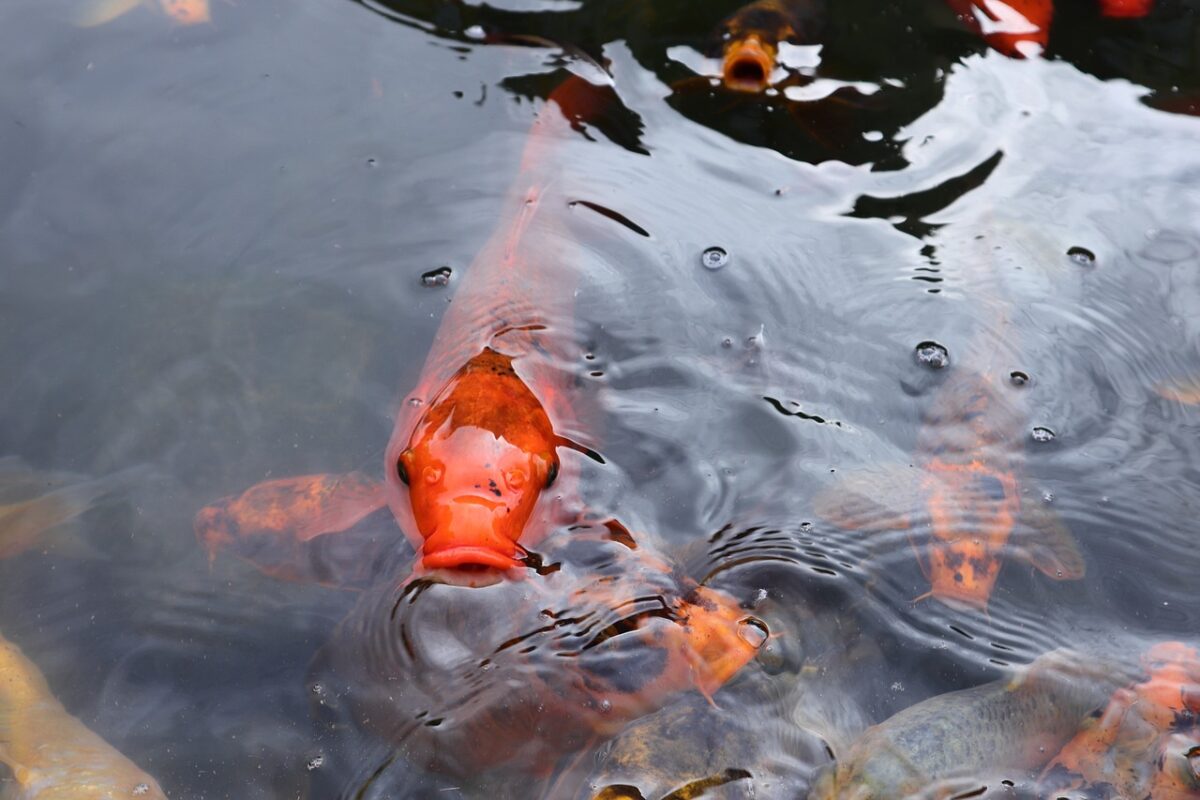
The Bottom Line
The best pond fish are those that match your environment, pond size, and goals. By choosing species based on climate compatibility, size, feeding role, and temperament, you’ll create a thriving ecosystem that’s easier to maintain and more enjoyable to watch.
The 10 Best Pond Fish for Color, Balance, and Low Maintenance
Ready to stock your pond? Instead of a one-size-fits-all list, we’ve grouped the top pond fish into categories based on climate compatibility, ecosystem benefits, and ease of care. Whether you’re building a cold-hardy pond, need help controlling algae and mosquitoes, or want stunning fish for a warm-weather setup, you’ll find options here for every type of pond and experience level, from beginners to seasoned aquascapers.
Here’s a quick reference chart that breaks down the top pond fish by category. Whether you’re building a cold-hardy setup, managing algae, or looking for warm-water options, these species have proven to be reliable, attractive, and beneficial for most backyard pond environments.
| Category | Recommended Fish | Best For |
|---|---|---|
| ❄️ Cold-Hardy Pond Fish (Winter Survivors) | – Koi – Goldfish (Comet, Fancy, etc.) – Calicos (Shubunkins) – Weather Loaches – Minnows (White Cloud, Fathead) | Outdoor ponds in temperate and cold climates |
| 🌿 Algae & Mosquito Control | – Mosquitofish (Gambusia affinis) – Siamese Algae Eaters – Mollies & Guppies | Maintaining balance and pest control |
| 🌡️ Warm-Water Pond Fish (Seasonal or Indoor Overwintering) | – Mollies & Guppies – Siamese Algae Eaters | Warm climates or ponds with winter housing |
| ⚠️ Specialty Fish (Advanced Care) | – Pond Sturgeons (Sterlet) – Black Moors | Experienced hobbyists; sensitive or large species |
5 Best Cold-Hardy Pond Fish (Winter Survivors)
If you live in a region with cold winters, not all fish are up to the challenge. The species in this section are known for their ability to survive in colder water and even under ice, as long as the pond is deep enough and properly aerated. These hardy fish make excellent choices for year-round outdoor ponds in temperate and northern climates.
1. Koi
Koi are ornamental varieties of the common carp, originally bred in Japan for their vibrant colors and patterns. They are among the most popular pond fish worldwide due to their beauty, hardiness, and ability to interact with humans. Koi can grow over 24 inches in length and require a well-filtered, spacious pond environment with a depth of at least 3 feet for winter survival.
They can be kept in indoor fish tanks when small, but once they grow larger, they should be transferred to outdoor ponds.
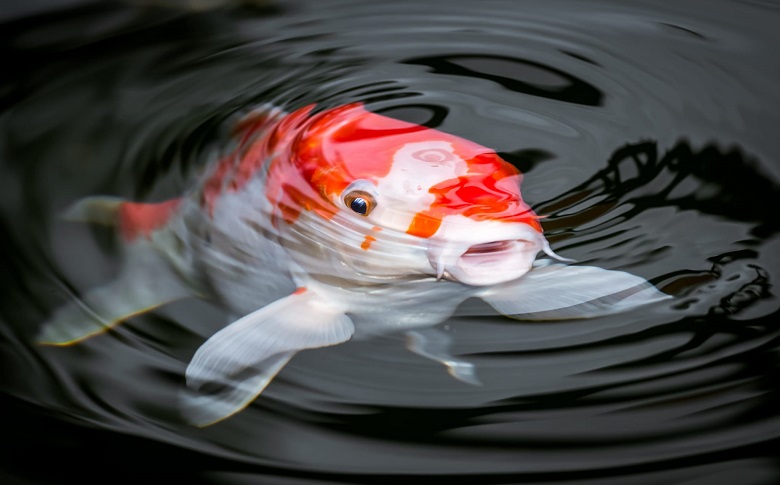
While koi may occasionally nibble on foods like lettuce or watermelon, their primary diet should consist of high-quality koi pellets formulated for proper growth and coloration. Feeding human snacks, such as cereals, is not recommended due to their poor nutritional value and water quality issues. These fish are highly social and can live for decades when properly cared for.
- Can grow 24″ or more; need large ponds (1000+ gallons)
- Cold-hardy and suitable for overwintering outdoors in deep ponds
- Feed primarily with specialized koi food; limit human food treats
- Require strong filtration, aeration, and routine water quality checks
The University of Florida UF/IFAS recommends that koi ponds be at least 3 feet deep to buffer against temperature fluctuations and reduce stress. In colder climates or for larger fish, depths of 4 to 6 feet provide greater safety and thermal buffer.
2. Goldfish
Goldfish are a hardy and beginner-friendly pond species. There are many varieties, from sleek comets to round-bodied fancy goldfish. In ponds, they can grow much larger than in aquariums—up to 12 inches or more for common types. They are social and often do well in groups.
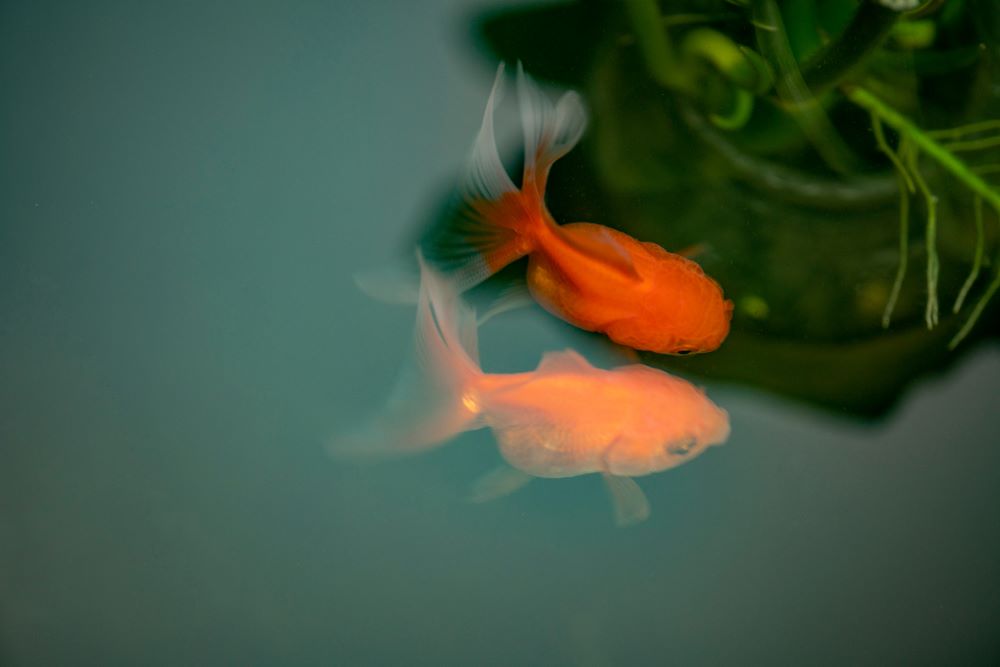
Goldfish thrive in cool water and can overwinter in ponds that don’t freeze solid. They are omnivores and enjoy a varied diet of pellets, vegetables, and small invertebrates.
The pond should be at least 2 feet deep to prevent temperature fluctuations, and 3 feet or more deep in colder regions. Because goldfish produce a significant amount of waste, a strong filtration system rated for 1.5–2 times the pond volume is essential to maintain water clarity and fish health.
- Grow 6–12″ depending on variety and environment
- Cold-tolerant; suitable for outdoor ponds year-round
- Social and peaceful; compatible with koi and other pond-safe fish
- Require strong filtration and regular pond maintenance
Despite their reputation as small aquarium pets, adult goldfish can grow 8–12 inches and need more space than many realize. A pond of at least 250 gallons is recommended for 2–3 goldfish, with 50 additional gallons per fish.
Research Insight: Goldfish (Carassius auratus) are temperate species with an optimal temperature range around 65–75 °F (18–24 °C). They can tolerate a broad temperature band (5 °C to 35 °C) when conditions change gradually, but extremes outside this range risk stress or organ damage.
3. Calicos (Shubunkin Goldfish)
Calico is a color pattern, not a breed. Shubunkins are a type of single-tailed goldfish that commonly exhibit the calico pattern, featuring patches of blue, red, white, and black. They are strong swimmers, hardy, and well-suited for life in outdoor ponds.
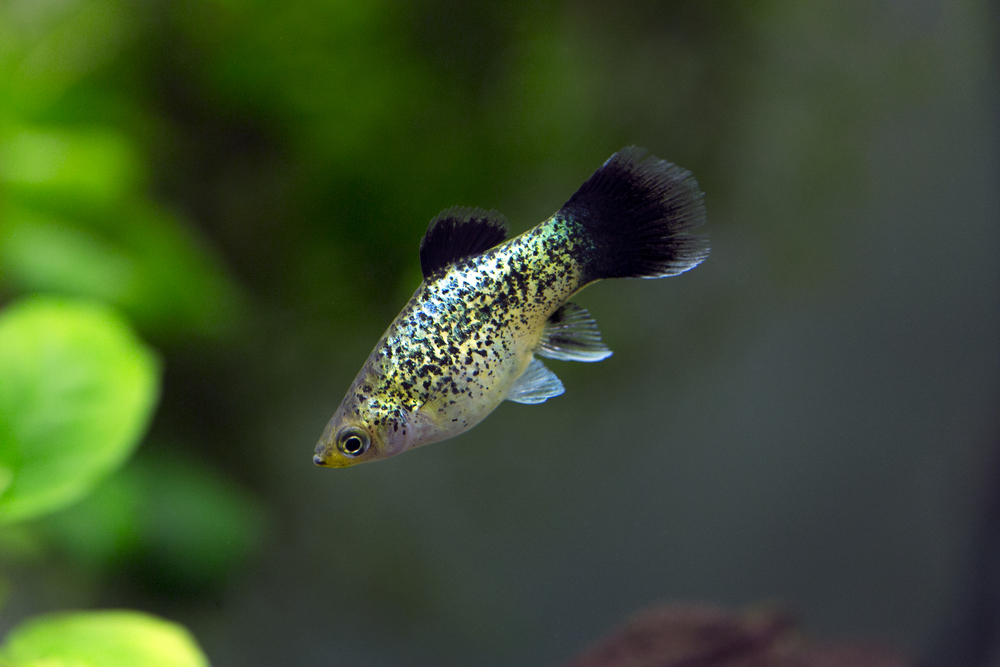
These fish can handle temperature fluctuations and coexist well with koi and common goldfish. Their active nature and attractive coloration make them suitable for both beginners and advanced pond keepers. They require a minimum of 15 gallons of water to grow.
- Grow 10–12″ in mature ponds with proper space
- Hardy and adaptable to outdoor conditions
- Great for mixed-species community ponds
- Visually striking and easy to care for
They will eat almost anything that is offered to them. This includes fresh and frozen flakes, but you may also occasionally feed them some fruit and vegetables.
4. Minnows (e.g., White Cloud, Fathead)
While often kept in aquariums, certain minnows, such as fathead minnows and white cloud mountain minnows, are excellent candidates for outdoor ponds. These small, peaceful fish are cold-hardy and ideal for mosquito control, thriving in cooler, well-oxygenated water.
In properly maintained ponds, they form schools, help control insect populations, and adapt well to seasonal temperature changes.
These species tolerate water temperatures between 64°F and 72°F and are a great choice for ponds in temperate climates. The water should also be soft and contain a neutral pH, and the pond should be decorated with driftwood, rocks, and live plants.
- Grow up to 3–4″; ideal for shallow or small ponds
- Cold-hardy; useful for mosquito control
- Prefer schooling and densely planted areas
- Compatible with peaceful, similarly sized fish
Their small size makes them vulnerable to predators, so protective cover is essential.
5. Weather Loaches (Pond Loaches)
Weather loaches are hardy, bottom-dwelling fish that can tolerate a wide range of temperatures and water conditions. Named for their sensitivity to barometric pressure changes, they often become more active before storms. They are sociable and should be kept in small groups.
Weather loaches are very hardy and can tolerate a wide range of temperatures, including cold winters, as long as the pond is deep enough and oxygen levels remain stable.
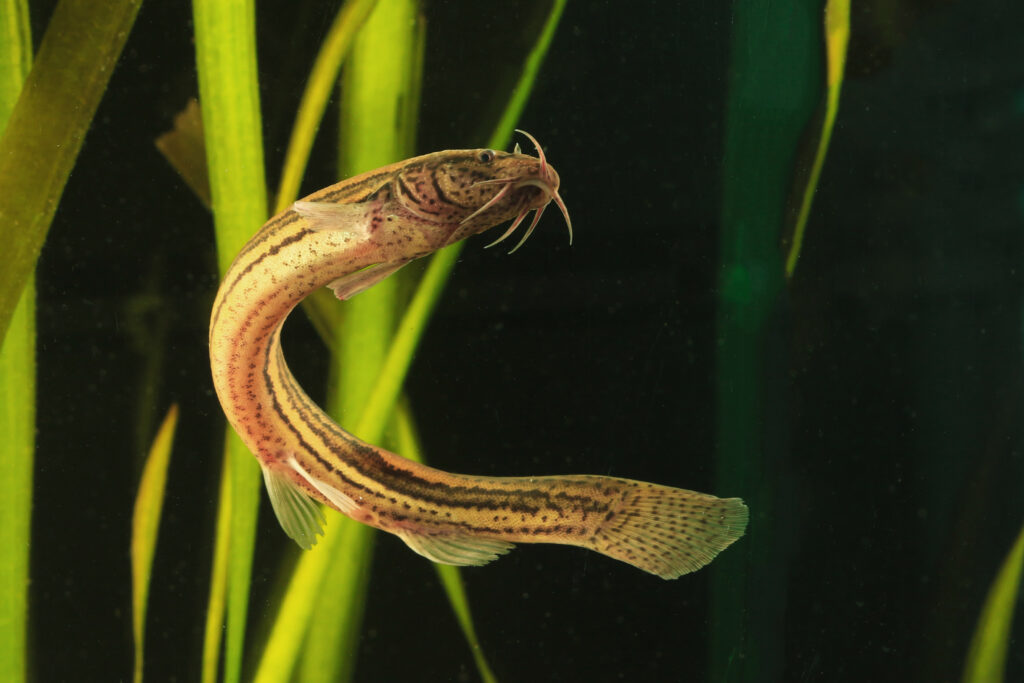
They require shelter, soft substrates, and clean water to thrive. Like goldfish, they may become sluggish in cold weather but can survive under ice if the pond does not freeze solid and aeration is maintained. These loaches grow up to 12 inches and like to burrow, so soft substrates and hiding areas are recommended.
- Grow up to 12″; tolerate cold and fluctuating temps
- Should be kept in groups of 3 or more
- Prefer soft substrates and shaded hiding areas
- Good for bottom cleanup and community ponds
3 Best Pond Fish for Algae and Mosquito Control
A healthy pond isn’t just about aesthetics — it’s about balance. The following fish do more than look pretty. They actively contribute to water clarity and pest control by consuming algae or mosquito larvae. These natural helpers reduce maintenance and support a cleaner, more self-sustaining pond environment.
1. Mosquitofish (Gambusia affinis)
Mosquitofish are small, live-bearing fish known for their appetite for mosquito larvae. They are often introduced to water features for biological pest control. However, they are highly invasive in many regions and can outcompete or harass native species and other ornamental fish.
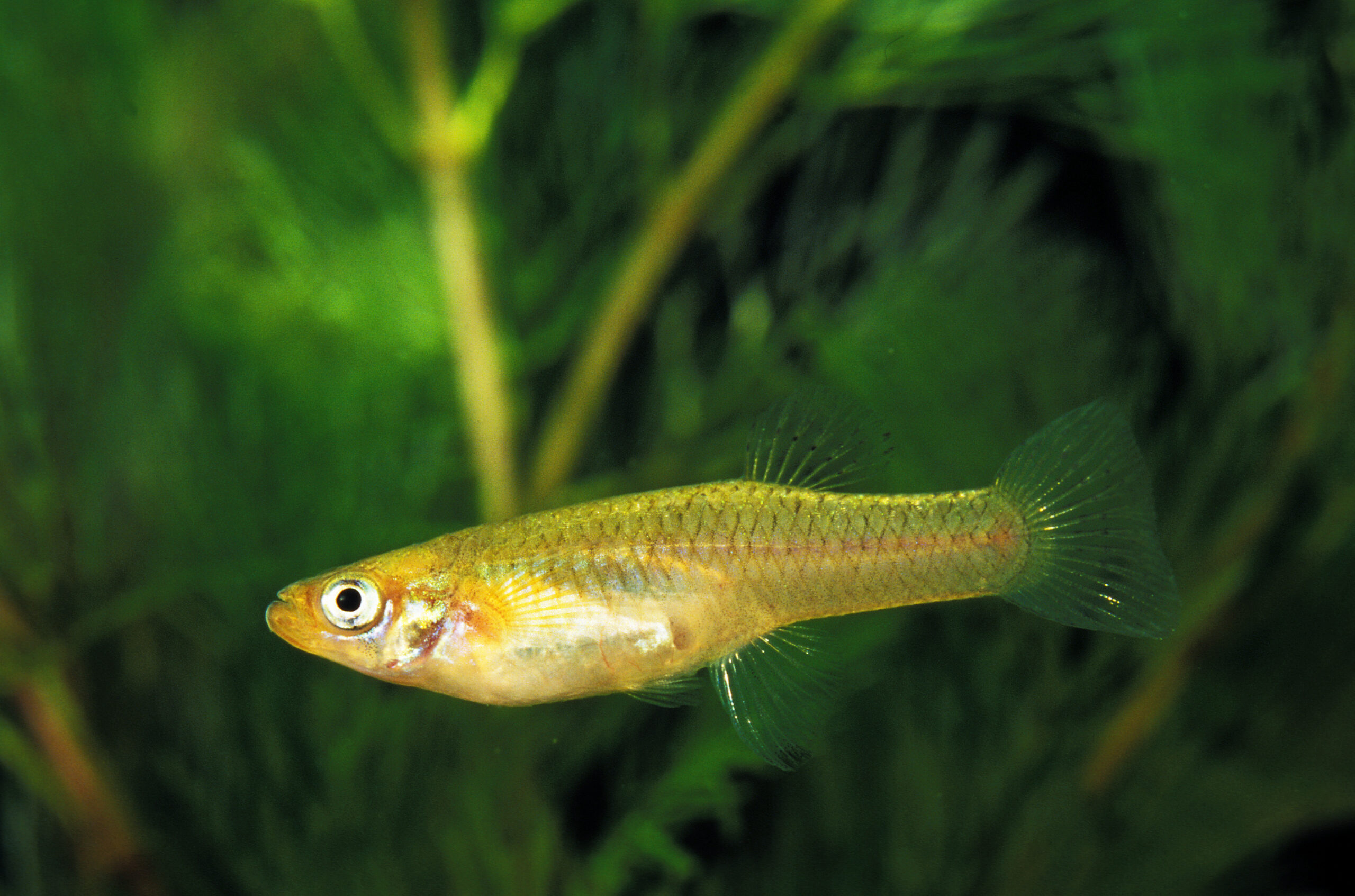
They thrive in shallow, warm ponds and require very little care, making them ideal for hands-off setups. However, their aggressive nature means they should not be mixed with more delicate fish like guppies or minnows.
- Grow up to 2.5″; ideal for small or shallow ponds
- Excellent for mosquito larvae control
- Can be aggressive toward other small or delicate fish
- Invasive in many areas; check local regulations before adding
Check local regulations, as mosquitofish are considered invasive in some areas.
2. Siamese Algae Eaters
These tropical freshwater fish are often used for algae control in aquariums, but can be kept in outdoor ponds in warm climates or during warmer seasons.
While helpful for algae control, they are fast and active swimmers that may stress, outcompete, or nip slower, docile fish like fancy goldfish. Only house them with similarly energetic and compatible species.
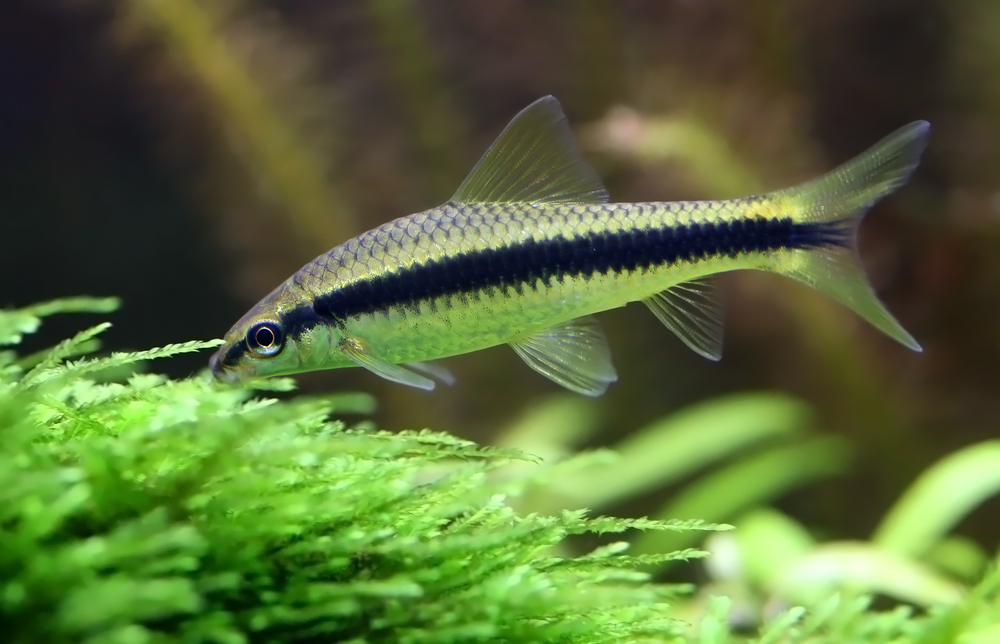
They require water temperatures of 70–79°F and should be moved indoors if the temperature drops below this range. Ensure you’re purchasing the true Siamese algae eater (Crossocheilus oblongus), as similar-looking species may be more aggressive or unsuitable.
- Require indoor housing or heating in cold climates
- Grow up to 6″; best for warm-weather or tropical ponds
- Great for controlling soft algae buildup on rocks and liner
- Not compatible with slow-moving or delicate fish
3. Mollies and Guppies
Popular in aquariums, mollies and guppies can thrive in outdoor ponds during summer or in tropical climates. They are livebearers and breed rapidly, which can lead to overpopulation if not managed.
These colorful, active fish do best in shallow, planted ponds with warm, stable temperatures.
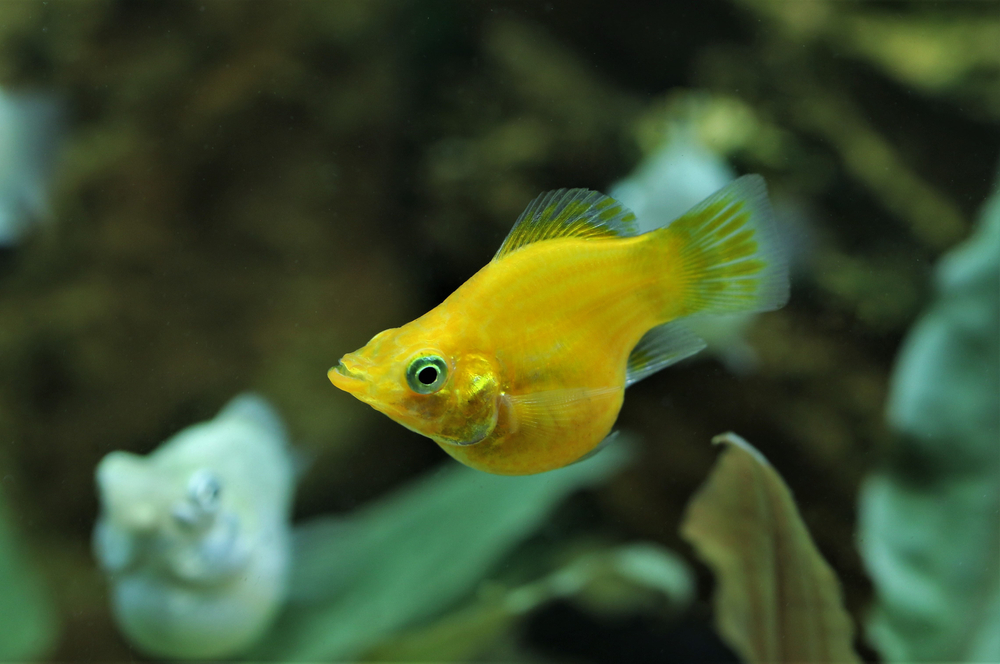
Mollies and guppies are tropical fish that require consistently warm water, ideally at a temperature above 75°F. They are not suitable for unheated ponds in temperate zones and should be brought indoors before the temperature drops.
- Ideal for tropical or seasonal outdoor ponds
- Breed quickly; population control may be necessary
- Sensitive to cold; requires indoor care in fall/winter
- Never release into local waterways to prevent ecological harm
Note: Although these fish breed rapidly and may overpopulate a pond, using them as live feeders raises ethical and health concerns, as they may carry diseases or parasites that are harmful to other animals. If population control is needed, consider humane methods such as rehoming or selling to pet stores. Never release them into natural waterways, as they can disrupt local ecosystems.
2 Specialty Pond Fish (Advanced Care)
While many pond fish are beginner-friendly, some species require more advanced care due to their size, sensitivity, or unique environmental needs. These specialty pond fish can be rewarding to keep, but they demand close attention to water quality, diet, and compatibility.
If you’re an experienced pond keeper — or ready for a new challenge — the following species may be a great fit.
1. Black Moors
Black Moors are a type of fancy goldfish known for their telescopic eyes and velvety black color. They are slower swimmers and have limited vision, making them vulnerable in ponds with fast or aggressive fish. Their unique appearance makes them popular, but they require extra care and monitoring.
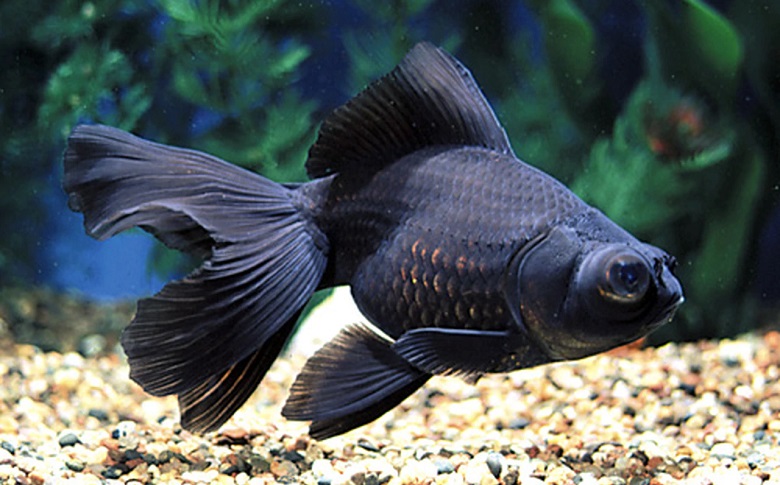
They can live in ponds during warmer months, but should be kept in peaceful environments with no sharp objects. Due to their sensitivity to water quality, strong filtration and regular water changes are necessary. Many hobbyists prefer to keep them in indoor setups year-round.
- Often better suited for indoor aquariums
- Grow up to 6–8″ in well-maintained ponds
- Require clean, smooth environments to protect their eyes
- Best with other slow, peaceful goldfish breeds
Black Moors eat a lot of pellets and flake foods, but can also be fed with live insects every once in a while, so that their diet is balanced out. They also feed on algae, insect larvae, and aquatic plants inside the pond.
2. Pond Sturgeons (Sterlet Sturgeon)
The Sterlet is the most suitable sturgeon species for pond life, growing to around 36 inches. Unlike koi and goldfish, sturgeons require cool, well-oxygenated water and a protein-rich, sinking diet. They are sensitive to high temperatures and low oxygen levels, especially during summer.
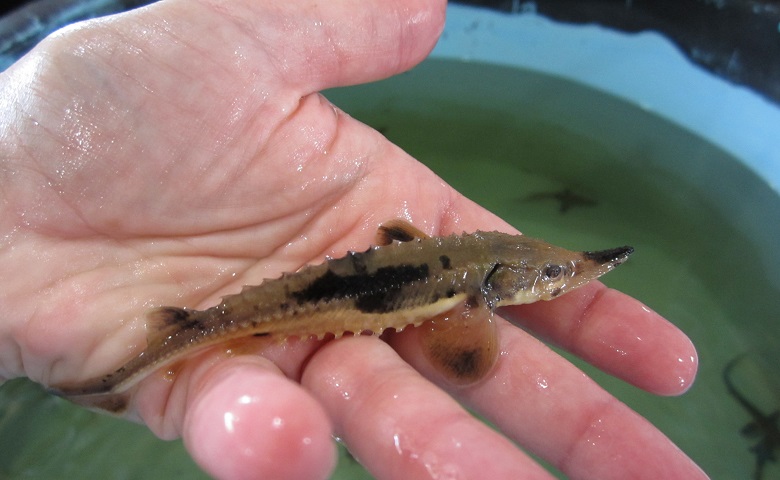
They are bottom-dwelling fish and prefer dimly lit environments with soft substrates. These ancient fish are best suited for large, deep, shaded ponds. They also do not compete well with faster or more aggressive feeders, such as koi, so they should be kept with caution in mixed-species ponds.
- Sterlets grow up to 3 feet; they need large, deep, cool ponds
- Strictly bottom dwellers with specialized feeding needs
- Do not compete well for food; avoid mixing with koi or large goldfish
- Require high oxygen levels, shaded zones, and strong water movement
Note: While Sterlet sturgeons can be kept in large, cool ponds, Beluga sturgeons are not suitable or legal for private ownership in many regions due to their size and protected status.
Pond Size & Stocking Guide
Before choosing your fish, it’s important to understand how your pond’s size, depth, and filtration system directly affect the health and number of fish it can support. Overstocking, poor planning, or mixing incompatible species can lead to major problems. This guide will help you calculate realistic stocking levels, avoid common mistakes, and build a thriving, balanced pond ecosystem.
How Many Fish Can Your Pond Support?
One of the most common mistakes new pond owners make is adding too many fish too quickly. Overstocking leads to poor water quality, stressed fish, and costly maintenance problems.
A general rule of thumb is to allow at least 10 gallons of water per inch of adult fish. For larger species like koi or goldfish, this scales quickly. A more advanced rule, used by aquaculture experts, is 2 pounds of fish per 100 gallons of water—but only when the pond is well-filtered and aerated.
It’s also important to consider the adult size of your fish—not how big they are at purchase.
Depth & Filtration Tips
Your pond’s depth plays a major role in fish health, especially during extreme seasons. For most climates, a depth of at least 2 feet is the minimum, while 3 to 4 feet is recommended for koi or in areas with freezing winters.
Deeper ponds are more stable in temperature and oxygen levels, which reduces stress and disease risk. Shallower ponds are prone to overheating in summer and freezing in winter.
As for filtration, choose a system rated for 1.5x to 2x your total pond volume. Combine mechanical filtration (for solids) with biological filtration (for ammonia and nitrite removal). Add aeration—like fountains, air stones, or waterfalls—to help oxygenate the water, especially in summer or under ice in winter.
Recommended Pond Products
Having the right gear can make all the difference when it comes to maintaining a healthy, low-maintenance pond. Below are a few tried-and-tested products we recommend for keeping your pond clean, well-circulated, and fish-friendly, whether you’re just getting started or upgrading your setup.
Top Gear Pick: Aquascape Faux Log Fish Cave
- Protects koi, goldfish, and other pond fish from predators like herons, raccoons, and cats
- Blends naturally into pond landscapes with a realistic faux wood design
- Durable, non-toxic resin construction is safe for all aquatic life
- Provides shade and shelter to reduce fish stress
Price:
Filter Media Pick: Cut-to-Fit Koral Filters Koi Pond Filter Roll (6 ft)
- Durable mechanical filter pad for ponds, aquariums, and sumps
- Traps fine particles to help maintain clear, healthy water
- Large 12″ x 72″ size can be cut to fit most filter boxes or trays
- Compatible with koi ponds, reef tanks, and freshwater systems
Price:
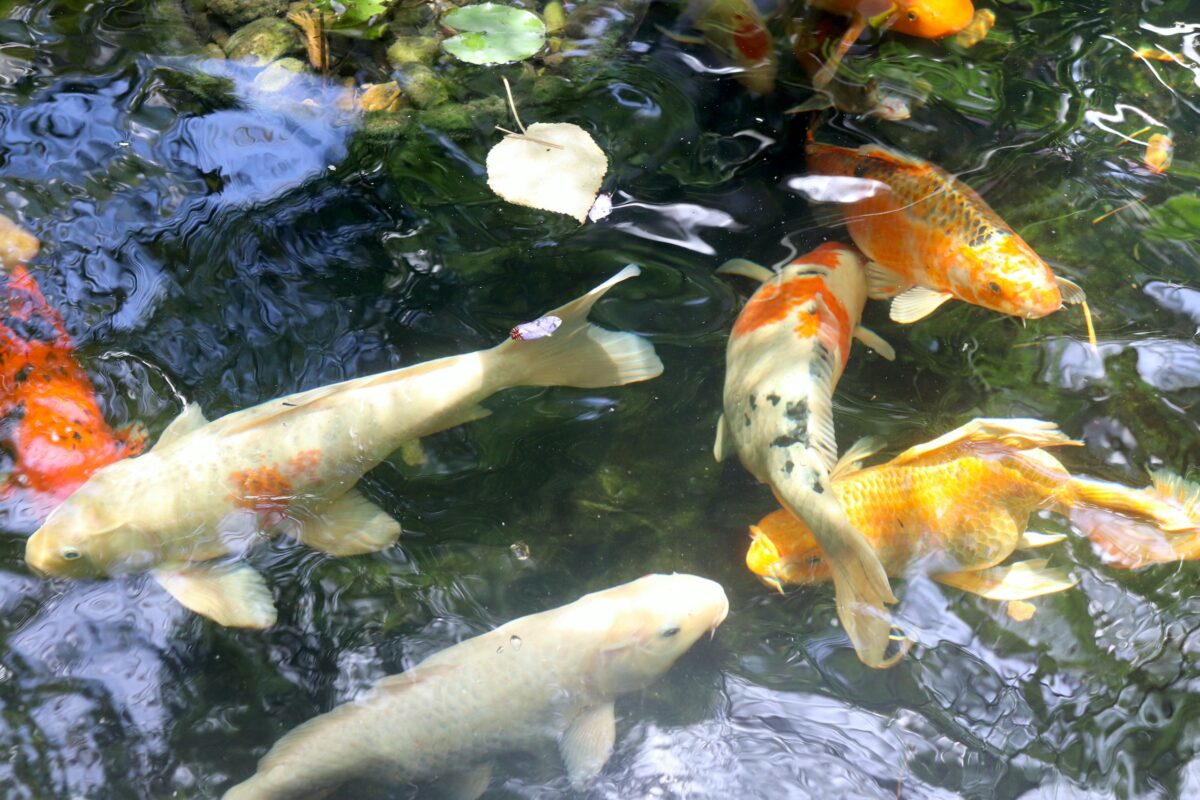
3 Common Pond Fish Mistakes to Avoid
Even with the best intentions, many pond owners run into trouble by overlooking a few key details. The mistakes below are surprisingly common and can lead to water quality issues, stressed or sick fish, and high maintenance costs. Here’s what to watch out for (and how to avoid them) as you build or upgrade your pond.
1. Overstocking
Too many fish = too much waste. Overstocking causes ammonia spikes, algae blooms, oxygen crashes, and fish stress. Always stock slowly, monitor water quality, and upgrade filtration as your fish grow.
2. Incompatible Species
Mixing aggressive and docile fish—or warm- and cold-water species—can lead to fighting, nipping, food competition, or even death. Ensure that all fish in your pond share similar water temperature requirements, swimming speeds, and temperaments.
3. Poor Winter Planning
Even “cold-hardy” fish need proper winter conditions. If your pond freezes solid, you’ll need a deeper zone (3+ feet) or a winter housing setup. Never allow ice to cover the entire pond surface—use an aerator or pond de-icer to maintain gas exchange.
How to Choose the Right Mix for Your Pond
The best pond setups strike a balance between beauty, ecology, and practicality. Choose fish that match your local climate, pond depth, and care level. A well-chosen mix might include a few showy koi or goldfish, some algae eaters, and mosquito-control minnows—all living in harmony.
Take it slow, observe your fish, and adapt as needed. A well-planned pond rewards you with lower maintenance, healthier fish, and a more peaceful backyard space.
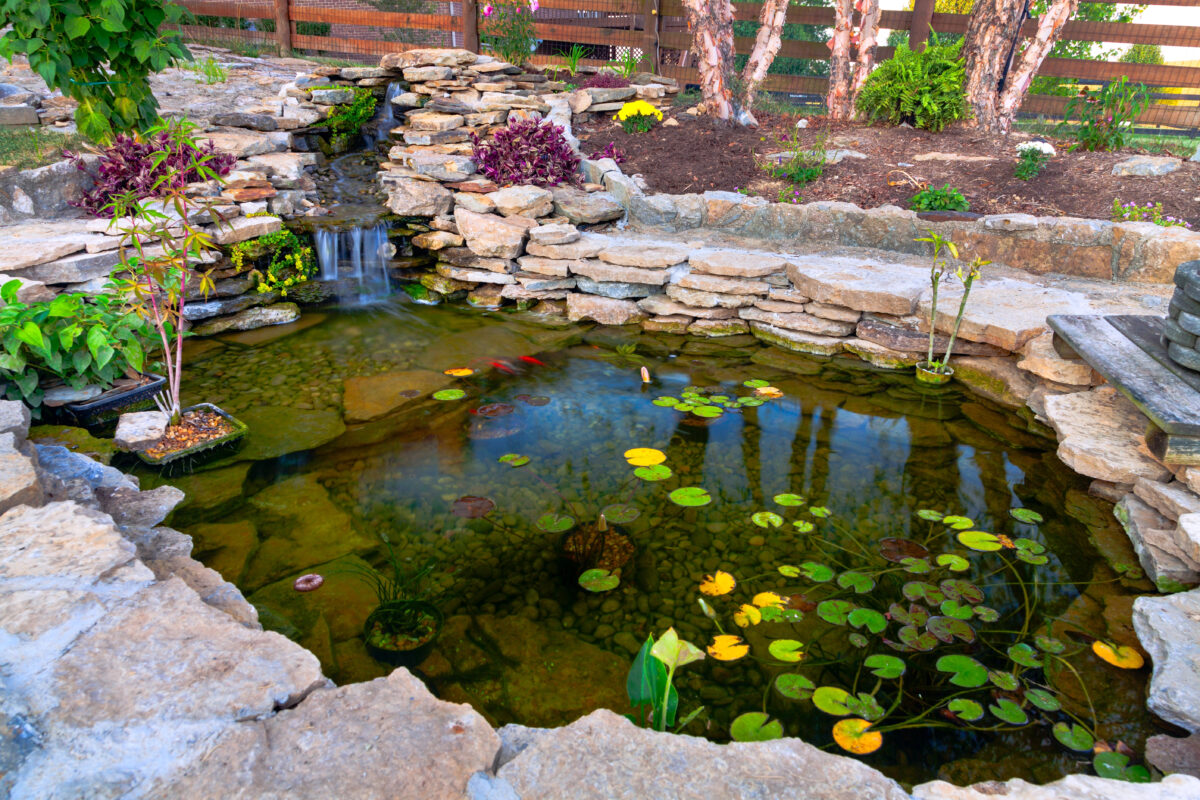
Pond Care & Maintenance
Creating a healthy pond ecosystem doesn’t end with choosing the right fish; it requires consistent care, clean water, and the right equipment. Regular maintenance, such as removing debris, vacuuming sludge, and ensuring proper water circulation, is crucial for maintaining a balanced pond. A quality pond pump keeps water moving and oxygenated, while a pond vacuum helps remove built-up waste that can harm your fish. For deeper cleaning routines, check out our complete guide on how to clean a pond.
Don’t forget to monitor oxygen levels, especially during hot summer months or under ice in winter. A reliable pond aerator can help prevent oxygen crashes that stress or kill fish. Regularly inspect your fish for signs of illness, such as erratic swimming or visible parasites. Learn more about symptoms and treatments in our pond fish disease guide. With the right tools and habits, your pond will remain a beautiful, low-stress environment for both you and your fish year-round.
What’s in Your Pond? Share Your Favorite Fish!
Every pond is unique, and we’d love to hear what’s worked best in yours. Do you have a favorite low-maintenance fish? A surprise species that thrives in your climate? Or tips for keeping your pond balanced year-round? Drop a comment below and share your pond setup, fish mix, or any lessons learned. Your experience could help fellow pond keepers build better habitats and avoid common mistakes!

